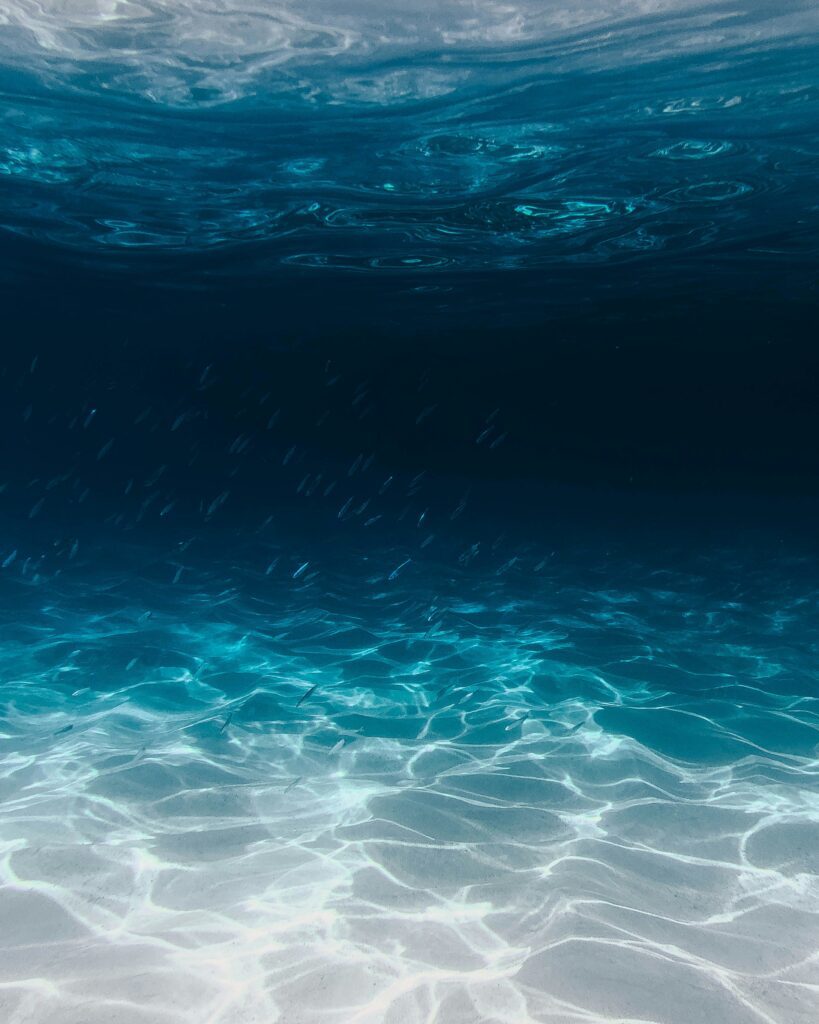Our oceans, vast and seemingly eternal, are facing an unprecedented threat: acidification. As humanity continues to pump excessive carbon dioxide into the atmosphere, our oceans dutifully absorb much of it. However, this absorption comes at a cost – it’s making the oceans more acidic. This phenomenon, known as ocean acidification, poses grave risks to marine life and consequently to the intricate balance of our planet’s ecosystems. In this article, we delve into the intricacies of ocean acidification, exploring its causes, its impacts on marine life, and the urgent need for collective action to address this pressing issue.
Chemical processes leading to acidification
Carbonic acid formation
Ocean acidification primarily occurs due to the absorption of carbon dioxide (CO2) from the atmosphere into seawater. When CO2 dissolves in seawater, it reacts with water molecules to form carbonic acid (H2CO3). This process is represented by the chemical equation:
CO2 + H2O → H2CO3
Carbonic acid is a weak acid, but it ionizes in seawater to release hydrogen ions (H+) and bicarbonate ions (HCO3-), thus lowering the pH of the ocean and making it more acidic. The increased concentration of hydrogen ions interferes with the ability of marine organisms to build calcium carbonate shells and skeletons, affecting various species throughout the oceanic food web.
Historical context and trends in ocean pH levels
Decline in ocean pH
Over the past century, human activities, particularly the burning of fossil fuels and deforestation, have significantly increased the amount of CO2 in the atmosphere. As a result, the oceans have absorbed a substantial portion of this excess CO2, leading to a measurable decrease in seawater pH. Since the beginning of the Industrial Revolution, the pH of surface ocean waters has decreased by approximately 0.1 units, representing a 30% increase in acidity.
The current rate of acidification is unprecedented in the geological record, raising concerns about its potential impacts on marine ecosystems and biodiversity. Furthermore, projections suggest that ocean pH could decrease by an additional 0.3 to 0.4 units by the end of this century if CO2 emissions continue to rise at current rates.

Factors exacerbating acidification
Fossil fuel burning
The combustion of fossil fuels such as coal, oil, and natural gas releases large quantities of CO2 into the atmosphere. Since the Industrial Revolution, human activities have significantly increased the atmospheric concentration of CO2, resulting in a phenomenon known as anthropogenic or human-induced ocean acidification. The oceans absorb approximately one-fourth of all CO2 emissions, which has led to a rapid decline in seawater pH and an increase in ocean acidity.
Deforestation
Deforestation, particularly in tropical regions, contributes to ocean acidification indirectly by reducing the Earth’s capacity to absorb atmospheric CO2. Trees and other vegetation act as carbon sinks, sequestering CO2 from the atmosphere through the process of photosynthesis. When forests are cleared or degraded, this natural carbon storage mechanism is compromised, leading to higher levels of CO2 in the atmosphere and increased absorption by the oceans.
The combination of fossil fuel burning and deforestation exacerbates ocean acidification, posing significant challenges to marine ecosystems and the millions of people who depend on them for food, livelihoods, and cultural heritage. Addressing the root causes of acidification requires concerted efforts to reduce CO2 emissions and protect and restore natural carbon sinks such as forests and mangroves.
Impacts on Marine Life
Coral bleaching and reef degradation
Ocean acidification poses a significant threat to coral reefs, which are among the most biodiverse ecosystems on the planet. Coral bleaching, a phenomenon where corals expel the symbiotic algae living within their tissues, is exacerbated by acidification. Increased acidity weakens the skeletal structures of corals, making them more susceptible to stressors such as elevated sea surface temperatures. As a result, coral reefs experience widespread bleaching events, leading to the loss of their vibrant colors and ultimately, reef degradation. This not only impacts the biodiversity of coral reef ecosystems but also the millions of people who rely on them for food, coastal protection, and tourism revenue.
Disruption of shell formation in marine organisms (e.g., mollusks, crustaceans)
Many marine organisms, including mollusks and crustaceans, rely on calcium carbonate to build their shells or skeletons. However, ocean acidification reduces the availability of carbonate ions in seawater, making it more difficult for these organisms to calcify and form their protective structures. As a result, shell-forming organisms such as oysters, clams, and certain species of plankton may experience decreased growth rates, thinner shells, or even shell dissolution in severely acidified conditions. This not only compromises the survival and reproductive success of these species but also has cascading effects on marine food webs and ecosystems.
Effects on plankton and food web dynamics
Plankton, including phytoplankton and zooplankton, form the base of marine food webs and play a crucial role in global biogeochemical cycles. However, ocean acidification affects the physiology and abundance of plankton species, with potential implications for entire marine ecosystems. Changes in seawater chemistry can alter the distribution, composition, and productivity of plankton communities, leading to shifts in trophic interactions and food web dynamics. For example, some studies suggest that acidification may favor certain species of phytoplankton over others, potentially disrupting the balance of primary production and impacting higher trophic levels such as fish and marine mammals.
Changes in fish behavior and distribution patterns
Ocean acidification not only affects the physiology and development of marine organisms but also influences their behavior and distribution patterns. Studies have shown that acidified seawater can impair sensory functions in fish, including their ability to detect predators, locate prey, and navigate their environment. This can have consequences for individual fitness, predator-prey interactions, and the structure of marine communities. Additionally, changes in ocean chemistry may drive shifts in the distribution of fish species, with potential implications for fisheries management, coastal economies, and global seafood supply chains. Understanding the complex effects of acidification on fish behavior and distribution is crucial for predicting and mitigating its impacts on marine ecosystems and human societies.
Ecological and Economic Consequences
Loss of biodiversity and ecosystem function
Ocean acidification poses a significant threat to marine biodiversity and ecosystem function. As acidity levels rise, many marine species, including corals, shellfish, and certain plankton, struggle to survive and reproduce. This leads to a loss of species diversity and alters the structure and functioning of marine ecosystems. For example, the decline of coral reefs due to acidification not only reduces habitat complexity but also diminishes the availability of food and shelter for numerous marine organisms. Additionally, the loss of key species can disrupt ecological interactions and cascade through food webs, further compromising ecosystem resilience and stability.
Impact on fisheries and coastal economies
The acidification of oceans has profound implications for global fisheries and coastal economies. Many commercially important fish species rely on calcareous organisms such as mollusks and crustaceans as prey or habitat, making them vulnerable to the effects of acidification. As these foundational species decline or become less abundant, it can disrupt fish populations and fisheries yields, leading to economic losses for fishing communities and seafood industries. Furthermore, coastal economies dependent on tourism, recreation, and other marine-related activities may suffer from declines in biodiversity and ecosystem health, affecting livelihoods and local economies.
Ripple effects on human communities dependent on marine resources
The consequences of ocean acidification extend beyond ecological and economic impacts to affect human communities that depend on marine resources for their livelihoods and well-being. Indigenous peoples, small-scale fishers, and coastal communities rely on marine ecosystems for food security, cultural practices, and economic prosperity. However, the degradation of marine habitats and declines in fish stocks due to acidification can undermine these traditional ways of life and exacerbate social inequalities. Moreover, the loss of marine biodiversity may limit opportunities for sustainable development and adaptation to environmental change, particularly in vulnerable coastal regions already facing multiple stressors such as pollution, overfishing, and climate change. Addressing the ecological and economic consequences of ocean acidification requires integrated approaches that prioritize ecosystem resilience, sustainable resource management, and equitable access to marine resources for present and future generations.
VIDEO CREDOTS NAKED TRUTH
FAQs
Q. What is ocean acidification?
A. Ocean acidification is the ongoing decrease in the pH of the Earth’s oceans, caused by the uptake of carbon dioxide (CO2) from the atmosphere. When CO2 dissolves in seawater, it forms carbonic acid, leading to a decrease in pH.
Q. What are the main drivers of ocean acidification?
A. The main drivers of ocean acidification are the burning of fossil fuels, deforestation, and industrial processes that release CO2 into the atmosphere. Approximately 30-40% of the CO2 emitted by human activities is absorbed by the oceans, leading to acidification.
Q. How does ocean acidification affect marine life?
A. Ocean acidification can have significant impacts on marine life, particularly organisms with calcium carbonate shells or skeletons, such as corals, shellfish, and plankton. The lower pH of seawater makes it more difficult for these organisms to form and maintain their calcium carbonate structures, which can hinder their growth and survival.
Q. What are some potential consequences of ocean acidification?
A. Some potential consequences of ocean acidification include the loss of coral reefs and other calcium carbonate-based ecosystems, changes in the distribution and abundance of marine species, and disruptions to marine food webs. Additionally, ocean acidification can affect the physiology and behavior of marine organisms, potentially leading to cascading effects throughout marine ecosystems.
Q. How can we mitigate ocean acidification?
A. Mitigating ocean acidification requires reducing CO2 emissions at their source. This can be achieved through measures such as transitioning to renewable energy sources, improving energy efficiency, and implementing policies to limit carbon emissions. Additionally, efforts to protect and restore marine ecosystems, such as coral reefs and seagrass beds, can help to enhance their resilience to the impacts of ocean acidification.
Conclusion
The specter of ocean acidification looms large, casting a shadow over the health and vitality of our oceans. From coral reefs to the smallest plankton, marine life is feeling the effects of rising acidity levels. Yet, amidst this crisis, there remains hope – hope in the form of concerted global efforts to curb carbon emissions, protect marine habitats, and foster resilience in vulnerable ecosystems. As stewards of this planet, it is incumbent upon us to act swiftly and decisively to safeguard the oceans that sustain us. For in protecting the oceans, we not only preserve the wonders of marine life but also secure a future of abundance and vitality for generations to come.
UP NEXT



